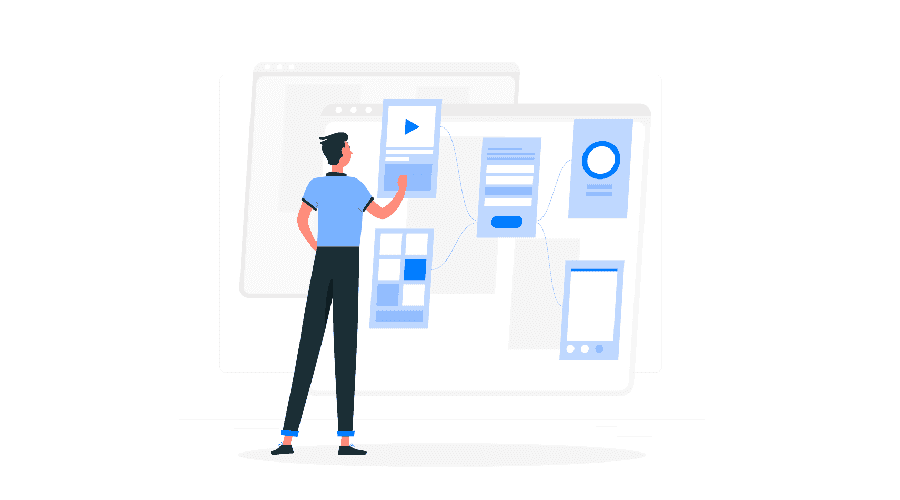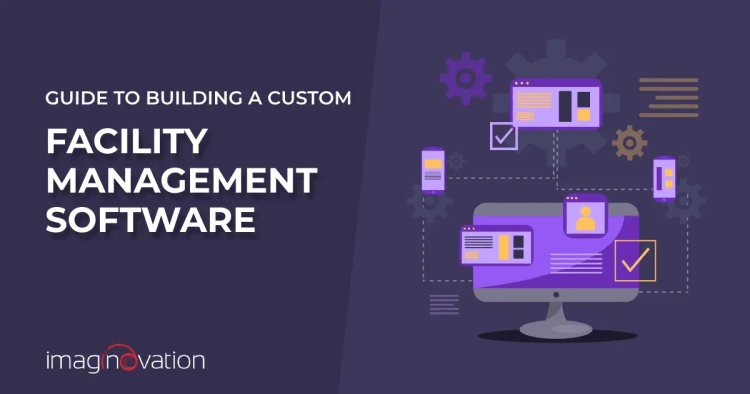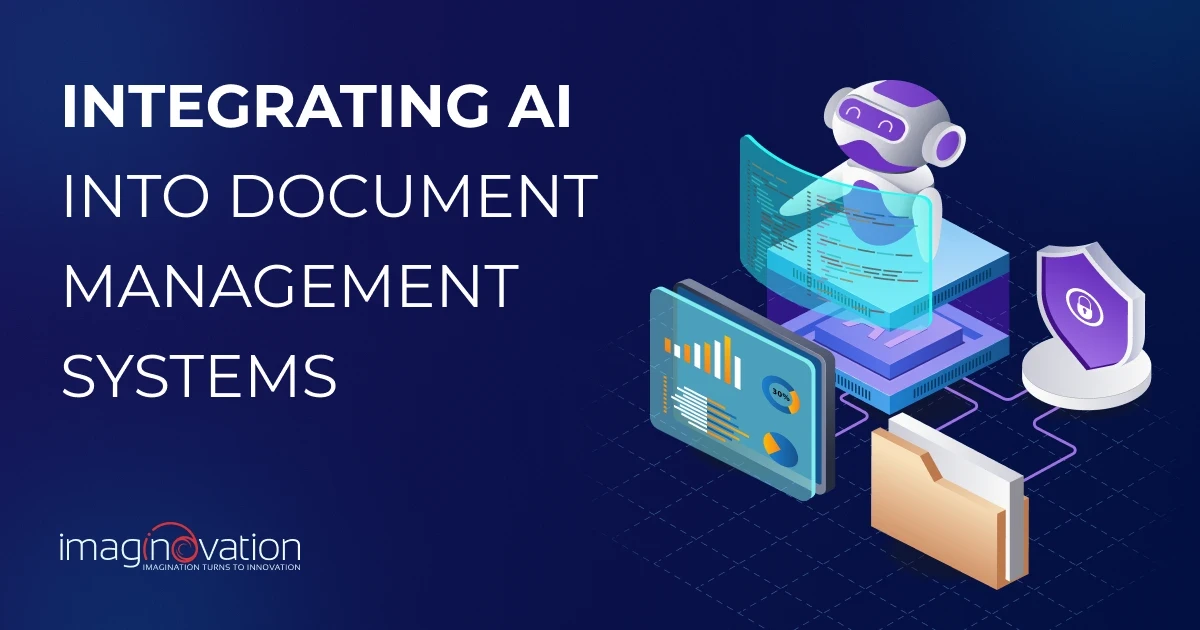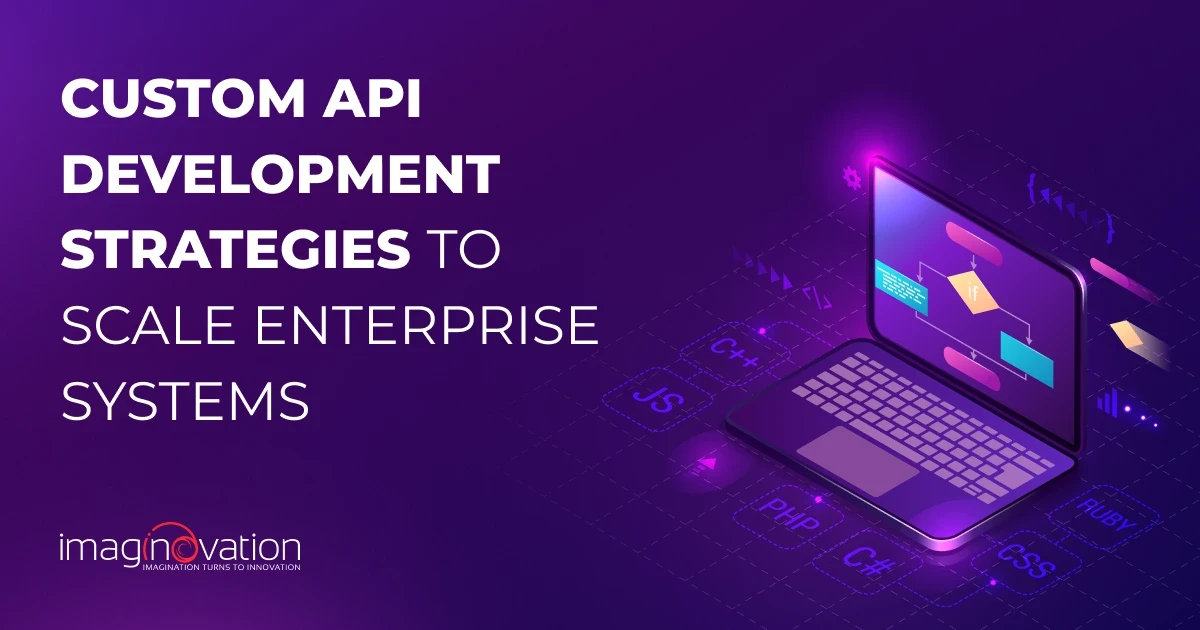In today's business landscape, as businesses expand, the complexities of operations also increase. Thus, creating a streamlined working environment will help teams to focus on what truly matters. Working on such an approach accelerates business growth, improves the overall management of facilities, and reduces costs.
As technology revolutionizes various industries, facility management software becomes indispensable for businesses. Every organization faces challenges that can make it tough for business leaders to manage activities. This is where facility management software steps in, enhancing operational efficiency and boosting returns.
Are you curious about building facility management software? Tag along! In this article, we will be looking at understanding the basics and how to develop the software. We will also look at aspects of facility management software implementation. Let's dive in!
Understanding Facility Management Software
Facility management software (aka FMS), also at times called facility management systems (FM systems), is a specialized digital tool designed to manage and optimize the way physical facilities or assets are managed in an organization. It includes managing an organization's physical infrastructure, including buildings, assets, and services.
Imagine tasks that keep a building or complex running smoothly; for instance - things like preventive maintenance scheduling, work order management, inventory tracking, or managing space. Facility management software helps automate and centralize these tasks, making them more efficient and cost-effective.
FMS acts like a central nervous system for your buildings, crucial in managing various aspects of building operations. Here's a peek at how FMS streamlines tasks:
- Maintenance Management: It helps schedule preventive maintenance, streamline work orders, and manage inventory control for spare parts and materials.
- Space Management: It helps optimize space allocation and usage, track occupancy, and allow reservations and booking of meeting rooms or conference spaces.
- Energy Management: FMS can monitor energy consumption and identify areas for improvement in reducing energy use.
- Security Management: The software can track inspections and certifications for fire safety, electrical systems, and other compliance requirements. Plus, it offers features for managing access control.
- Occupant Comfort and Well-being: FMS can handle service requests, and manage amenities like room temperature or lighting controls, contributing to a more comfortable work environment.
- Compliance Management: The software can ensure that building operations adhere to local, state, and federal regulations, including health, safety, and environmental standards.
- Reporting and Analytics: FMS provides valuable data and analytics on various aspects of building operations.
FMS is a powerful tool that improves efficiency, reduces costs, and creates a smoother building operation. Here are some exciting statistics:
- According to a study, the FM industry is expected to touch USD 1856.44 billion by 2029. Experts highlight the growth to be attributed to facilities management (FM) becoming a core part of business models across industries.
- According to a research study, in 2030, the market size of the facility management industry has been predicted to reach more than two trillion U.S. dollars.
- Yet another study highlights that the facilities management market size is forecast to increase by USD 826.91 billion, at a CAGR of 9.61% between 2023 and 2028. Further, experts have identified that the growth rate of the market depends on several factors, including the increasing demand for cloud-based FM solutions, the increasing demand for smart facilities, and the increase in sustainable cleaning products in FMS.
Bottomline: The numbers speak volumes highlighting how facility management software can be a game-changer for building operations.
Types of Facility Management Software
In today's business landscape, there are various types of facilities management software, and it is vital to know the different functionalities available. Here’s a peek at the types of facility management software.
1. Computerized Maintenance Management Systems (CMMS)
A computerized maintenance management system (CMMS) plays a crucial role in various industries, especially where physical infrastructure is critical. It is a software that centralizes maintenance data and information. A few benefits of CMMS include asset and workflow visibility, automating tasks, preventive maintenance, and compliance management.
2. Integrated Workplace Management Systems (IWMS)
Integrated workplace management systems (IWMS) is a software platform relevant to real estate and facilities management. It also expands to capital project management, sustainability management, and resource management.
The comprehensive solution works on data and metrics related to real estate and facilities portfolio management. Further, the insights ensure high-quality management information, maximized monitoring and control, and full compliance.
3. Building Automation Systems (BAS)
A Building Automation System (BAS) is a centralized networked system with a fine blend of hardware and software that oversees the operations of a building and helps monitor and control the environmental conditions. The monitoring transcends to a building's facility systems (electricity, lighting, plumbing, HVAC, water supply, etc.) The key components of BAS include sensors, controllers, output devices, communication protocols, and a dashboard or user interface.
4. Enterprise Asset Management (EAM)
Enterprise asset management (EAM) is a blend of systems, software, and processes to optimize and control physical assets and equipment in an organization. The solution is apt for manufacturing and asset-intensive industries and can help oversee physical asset lifecycles and equipment maintenance to improve utilization and cost controls.
5. Space Management Software
Space management software solutions can help manage an organization's real estate assets and physical space inventory. It helps optimize the use of physical spaces, including meeting rooms, office spaces, desks, and entire buildings. Moreover, the software solutions offer tools to plan and manage space efficiently, improving your bottom line.
Key Features of Facility Management Software
Let’s look at some key features that are found in modern facility management systems.

Asset Tracking and Management
The asset tracking and management feature allows businesses to manage assets and facilities across multiple locations. It will enable tagging assets with unique identifiers, which include the asset's model, serial number, make, etc. With this feature in the FMS, it will help you track your company assets, identify underutilized assets, and optimize asset use.
Work Order Management
A robust FMS must have a seamless work order. With work order management functionality, it is easy to create, assign, and track work orders from a single platform. The software should ensure that work orders can be routed to contractors at approved rates. Some solutions also allow prioritizing work orders based on urgency or impact on operations.
Maintenance Scheduling
An FMS with a maintenance scheduling feature will help ensure the efficient and effective operations of facilities. When tracking maintenance history, the solution helps with easy access. Moreover, it is easy to plan maintenance schedules in advance.
Compliance and Safety Management
A well-developed FMS will support streamlining regulatory compliances. It will guarantee tracking and managing all safety facets and take care of complying with the latest regulations.
Reporting and Analytics
The FMS solution should be able to create any kind of report, providing insights into identifying trends, and facility performance, and supporting data-driven decision-making. The solution must be able to collate insights into relevant markets, operations, technology, etc. and based on key parameters generate reports as needed.
Third-party Integrations
The FMS solution should have a feature that stimulates smooth third-party integrations, such as accounting and payment systems. The feature helps reduce data input errors, automation for auditing processes, and payment automation.
Mobile Access
Mobile applications are a crucial component of modern facility management systems. The feature provides on-the-go access and real-time functionality for maintenance staff, facility managers, and other stakeholders.
Benefits of Implementing Facility Management Software
Implementing facility management software not only enhances operational efficiency and boosts asset management but also leads to significant cost savings and improved productivity. Delve into the transformative advantages such systems offer, highlighting how streamlined processes, compliance assurance, and optimized resource utilization can revolutionize facility management.
Increased Operational Efficiency
Facility management software improves operational efficiency by lowering expenses, saving time, and creating more value through efficient asset care and utilization. When you find operational efficiency increasing, you will find that your organization will also expand the ability to produce a higher revenue without increasing costs.
Cost Savings
A robust FMS can help save significant asset savings. It can not only help enhance energy efficiency, but also reduce operational costs, and save costs in many other ways. For instance - by automating tasks, an FMS can prevent equipment failure and system breakdown, reducing costs.
The software can schedule regular maintenance tasks, preventing costly emergency repairs. It can also ensure real-time tracking of assets, ensuring they are used efficiently and reducing unnecessary purchases.
Improved Asset Lifespan
Facility management software can significantly extend the lifespan of assets with the help of advanced analytics. The insights help meticulously schedule preventive maintenance tasks and monitor asset conditions in real-time.
Enhanced Space Utilization
FMS enhances space utilization, which is vital for increased productivity. With the help of real-time data and advanced analytics, it is easy to work on space optimization capabilities in your workplace space. Additionally, automation helps generate detailed utilization reports and trend analyses, providing valuable insights for long-term space planning.
Better Compliance and Safety
A robust FMS enhances compliance and safety by providing a sturdy framework for tracking and managing regulatory requirements and safety measures. It provides a centralized platform for tracking compliance-related tasks, ensuring that all regulatory deadlines and standards are met.
Data-Driven Decision Making
Facility management software ensures data-driven decision-making by collecting, analyzing, and presenting comprehensive data on all facets of facility operations. It aggregates data from various sources, which include occupancy sensors, maintenance records, energy usage, and asset performance, providing a holistic view of facility operations.
Preparing Your Organization for Facility Management Software
Preparing your organization for facility management software involves a critical assessment of existing practices and a strategic setting of achievable goals. Understand the steps necessary to align your current facility management practices with the sophisticated capabilities of modern software solutions, ensuring readiness for seamless implementation.
Assess Current Facility Management Practices
It will help to start with assessing your current facility management practices. It is a crucial step as it will help identify the strengths and weaknesses in existing processes. Conduct a thorough review of all current facility management practices, including maintenance, space management, energy usage, safety protocols, and vendor management.
Moreover, it is critical to highlight the pain points and the areas where your current system is failing or inefficient. Based on the insights, it will be easy to set clear and measurable goals and objectives.
Define Goals and Objectives
Next, focus on the key features and functionalities of facility management software solutions you'd wish for in the new software. For instance - you may want inventory management, asset tracking or other features.
Based on the insights, it will help to set clear, measurable objectives for what you want to achieve. Moreover, it will help the design and developer team to build a scalable and robust solution.
Choose the UI/UX and the Right Software

When developing the software solution, ensure that the UI/UX design is captivating. It should be easy to use and navigate. In this stage, the prototypes and wireframes will come into the picture. It is also prudent to make the software solution available for mobile and desktop devices for easy accessibility.
Yet another area of deep consideration is to choose the right tech stack, which will help you achieve the goals and objectives of building your FMS. When selecting the right tech stack and technology, check for compatibility with other devices and platforms, security, and scalability.
Prepare Your Team
As you focus on developing the software solution, it is also vital to prepare the team effectively for a successful implementation of the FMS. Assign a project leader to oversee the entire implementation process. Plus, identify core team members from different departments (facility management, IT, finance, HR) who will be involved in the project. You can also offer specialized training for the IT team on software installation, configuration, and integration with existing systems.
Develop a Detailed Implementation Plan
It is essential to have a detailed implementation plan for preparing for facility management software, which involves several key phases from planning to post-implementation review. The plan will further ensure a smooth and successful transition to facility management software, leading to improved efficiency, better resource utilization, and enhanced overall performance.
Ensure Data Security and Compliance
Ensuring data security and compliance is critical when preparing for the implementation of facility management software. A comprehensive plan must include conducting a risk assessment where you identify potential vulnerabilities in current data storage and management practices and evaluate possible threats. It is significant to implement strict access controls and perform a compliance audit.
Implementing Facility Management Software in Your Organization
Careful planning and strategic execution are key to successfully implementing facility management software. Examine the critical steps involved in this process, from choosing the right vendor and tailoring the software to your needs, to effectively training your staff and integrating the system with existing operations for enhanced functionality and streamlined workflows.
Select the Right Vendor
Having the right vendor can smoothen the entire process of implementing facility management software. You can start by conducting thorough market research and looking at reviews and ratings on industry websites and forums.
The process of selecting will involve initial screening, and narrowing down the list of vendors who are a best fit to your basic requirements. Provide vendors with specific use cases that are relevant to your operations and request reference checks. Based on the insights, partner with the vendor who offers the best value.
Customize the Software to Your Needs
It is essential to customize the FMS to your unique needs, as it will help to ensure that it is a perfect fit for your facility. Thus, you can create custom reports to industry-specific configurations and tailor the solution to maximize the facility management processes in your organization.
Train Your Staff
Training staff is yet another crucial component of preparing for the implementation of FMS. Effective training ensures that users are confident and competent in using the new system, which enhances productivity and reduces the likelihood of errors.
Integrate with Existing Systems
Next, it’s time to integrate your software solution with existing systems. The integration will ensure seamless operations, maximizing efficiency and avoiding data silos.
The developer team can choose appropriate integration methods (e.g., APIs, middleware, direct database connections). Moreover, it will help to establish data standards and formats to ensure compatibility across systems and define security protocols to protect data integrity and privacy during integration.
Pilot Testing and Feedback
The next stage is when you are ready to evaluate the software solution, identify issues and bugs, and fix them. Your team can take care to ensure that the software solution performs well with the help of integration testing and user acceptability testing. Now, you are all set to deploy and launch the FMS.
Full Deployment and Monitoring
Once your FMS solution is ready for deployment, you can launch the software. It is critical to monitor it closely, gather feedback, and work on enhancements to meet the user's needs.
Wrapping Up
It’s no longer a question of whether your business can benefit from facility management software—it’s a question of how soon you can start reaping the benefits. Get ready to transform your operations, enhance your team’s productivity, and drive your business forward with a solution designed for today’s dynamic business landscape.
Are you ready to take the next step? Embrace facility management software and unlock the full potential of your facilities. Your future of efficiency, savings, and seamless operations starts now!
Build Your Custom Facility Management Software with Imaginovation
Are you ready to build a game-changing custom facility management software? We can develop solutions that are best-fit to your business needs.
We are an award-winning software development and digital solutions company in Raleigh with an impressive experience of developing robust custom software solutions that can give you a competitive edge.
Ready to build an app, but not sure where to start?
We've got you covered. Click the button below to get started.





